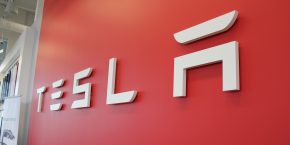
We have recently seen increasing numbers of collaborations between Tesla and SpaceX, two companies co-founded and led by Elon Musk.
Now an analyst suggests that the two companies could nurture an even closer relationship over time, including “possible strategic partnerships, technology transfer, co-investment and potentially a combination.”
The report comes from Morgan Stanley’s Adam Jonas, one of the most prominent financial analyst covering Tesla.
In a note to clients today, the analysts laid out several different reasons why he thinks that Tesla and SpaceX could go from their current status on sporadic collaboration to a full partnership or even a merger.
One of those points is a way to make sure Musk keeps leading both companies.
Jonas wrote:
“In our view, Tesla’s ‘key man’ risk is higher than any other company we cover, possibly rivaled only by Sergio Marchionne at FCA. Investors widely expect Elon Musk to, over time, devote increasing amounts of his time and talents to SpaceX, raising the very real question of who could replace him at Tesla. A combination of efforts between the two firms could address this important issue.”
Musk has previously said that he is committed to staying CEO of Tesla until at least volume production of the Model 3, which could be any day now, according to the company.
But he also always emphasized that if he was to stop being CEO, he would still always stay at the company under other leadership positions and remain a major shareholder. Along with “CEO”, he is also currently “Product Architect” and Chairman of the Board at Tesla.
Jonas’ other reasons have more to do with finance. He expects the automotive market to become highly competitive and that there will more consolidations.
He doesn’t see Tesla being bought or partnering with anyone and therefore, a partnership with SpaceX could prove a better option.
Morgan Stanley sees the potential for SpaceX to become a highly profitable company that could help Tesla secure funding for its increasingly more ambitious plans.
Finally, Jonas mentions historical precedent with Tesla’s merger with SolarCity and increasing technological overlap between the companies – specifically with AI:
“Space and automated driving networks are two of the more commonly cited end-markets where advanced software/hardware systems can benefit from machine learning and deep learning.”
Recent examples also showed that “Tesla benefited from SpaceX’s expertise in material science, manufacturing and business model.”
Also, we are told that Musk is absolutely serious about launching a Tesla Roadster into space on a Falcon Heavy rocket next month.
Electrek’s Take
I don’t think that it is out of the question that we could see a “Musk Industries” type of situation eventually.
When Tesla bought SolarCity last year, we uncovered an obscure comment made by Musk years ago about creating an umbrella company to hold the stocks of SolarCity, Tesla, and SpaceX.
So we at least know that he thought about it at some point.
Of course, the situation has changed a lot since and both companies have grown tremendously over the last few years, which could make a merger or any kind of important partnership more difficult.
But collaborations between the two companies have also increased over those years.
In the past, Musk said that SpaceX benefited from Tesla’s manufacturing efforts, while the rocket company transferred novel welding techniques and equipment to Tesla.
In terms of direct application to improving performance, Musk also said that Tesla’s ‘Ludicrous Mode’ was partly enabled by applying a material expertise developed by SpaceX.
Tesla replaced the main pack contactor to use Inconel instead of steel. Inconel is a space-grade superalloy well suited for extreme high-temperature environments. This superalloy is primarily used in the aerospace industry, and one of its more famous use is in the novel manufacturing process of SpaceX’s SuperDraco engine.
More recently, Tesla said that SpaceX’s team helped the company save 8 hours of work per car by sharing ultrasound sensor technology to solve an issue with aluminum casting.
Other examples include Tesla is developing IT tools in collaboration with SpaceX and the two companies have even been sharing executives, like a former Apple alloy expert leading materials engineering at both Tesla and SpaceX.
Maybe it would make sense to have a shared engineering team solving complex problems at the two companies?
What do you think? Let us know in the comment section below.
FTC: We use income earning auto affiliate links. More.





Comments